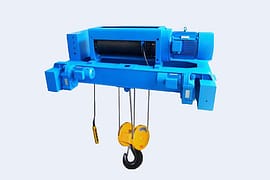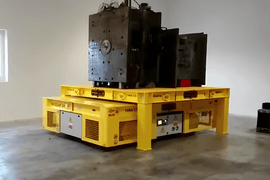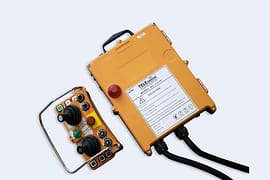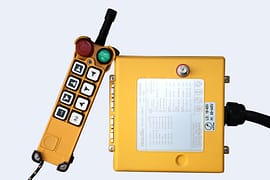Types of EOT cranes: Top Running and Underhung Cranes(With Infographic)
EOT cranes, also known as overhead cranes or bridge cranes, are a type of material handling equipment widely used in various industries. They are designed to lift, move, and position heavy loads across the workspace with ease and efficiency. There are two major types of EOT cranes: top-running and under-hung cranes. These two types have distinct differences in their design, construction, and application. In this article, we will compare the advantages and disadvantages of each type to help you choose the right overhead crane for your specific needs.
Types of EOT cranes: Top Running EOT Cranes
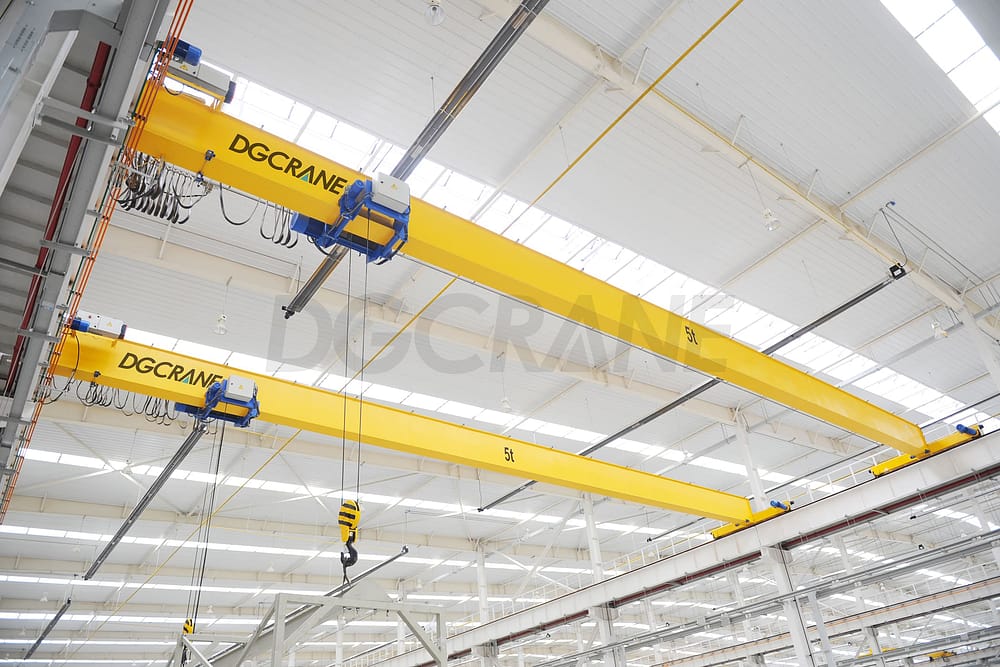
Top-running EOT cranes are the most common types of EOT cranes. They are mounted on rails that are installed on top of the building’s support structure, allowing the crane to travel along the length of the building. The hoist and trolley are suspended from the bridge girder, which spans the width of the building.
Advantages
- High lifting capacity: Top-running cranes are capable of handling heavy loads up to 500 tons or more. This makes them ideal for large-scale applications in automotive, steel mills, and shipbuilding industries.
- Long travel distance: Due to their top-mounted rail system, these cranes can travel over a longer distance compared to underhung cranes.
- Easy to maintain: Top-running cranes are easy to maintain due to their simple design and accessibility. Most components can be easily replaced or repaired without removing the entire crane from its position.
- Versatile: Top running cranes can be customized to meet different requirements, such as higher lifting heights, multiple hoists, and advanced control systems.
Disadvantages
- Higher cost: Top-running cranes require a strong support structure to hold the rails, which can increase the overall cost of installation and maintenance.
- More space required: The top running crane takes up more headroom compared to the underhung crane, which may not be practical in buildings with a low clearance height.
- More complex installation: The installation process of top-running cranes can be more complex and time-consuming due to the need for specialized equipment.
Types of EOT cranes: Underhung EOT Cranes

Underhung EOT cranes, also known as underslung cranes, are designed to travel on the bottom flange of the runway beam. They use special hangers that are suspended from the runway beam, allowing them to move along the length of the building.
Advantages
- Lower cost: Underhung cranes are generally less expensive than top-running cranes because they do not require a strong support structure to hold the rails.
- Low headroom required: Underhung cranes require minimal headroom, making them ideal for buildings with low clearance height.
- Easy installation: The installation process of underhung cranes is relatively simple and fast. In many cases, they can be installed without disrupting the existing structure of the building.
Disadvantages
- Limited lifting capacity: Underhung cranes are limited in their lifting capacity due to their design. They are typically used for lighter loads up to 20 tons or less.
- Shorter travel distance: The travel distance of underhung cranes is limited by the length of the runway beam. This means that they may not be suitable for larger workspaces.
- Harder to maintain: Underhung cranes have a more complex design that can make maintenance and repairs more challenging.
Conclusion
In summary, both top-running and underhung cranes have their unique advantages and disadvantages. Choosing the right type depends on various factors such as the weight of the load, the size of the workspace, and the available headroom.
Top running cranes are best suited for heavy-duty applications that require high lifting capacity and long travel distances. They are also versatile and customizable, making them ideal for complex lifting tasks.
Underhung cranes, on the other hand, are more suitable for lighter loads and low-headroom applications. They are also cost-effective and easy to install, making them an excellent choice for smaller workspaces with a limited budget.
Ultimately, the decision between top-running and under-hung cranes will depend on your specific requirements and preferences. By considering the advantages and disadvantages of each type, you can make an informed decision and choose the right overhead crane for your business needs.















































